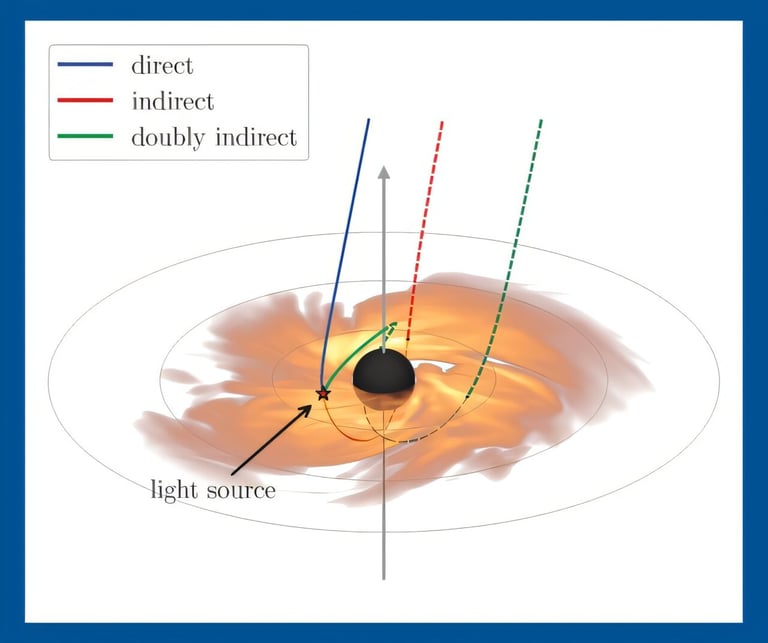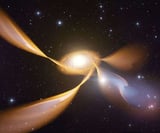Breakthrough Technique Reveals Light Echoes Around Black Holes, Enhancing Mass and Spin Measurements
November 7, 2024
Published in 'The Astrophysical Journal Letters', this research leverages gravitational lensing, where light bends around black holes, creating observable echoes that arrive at different times.
Detecting light echoes could also serve to test Einstein's theories of gravity, potentially revealing anomalies that challenge existing understandings of black holes.
This innovative approach provides an independent metric for deriving reliable mass and spin estimates, which are vital for understanding the influence of black holes on the universe's evolution.
A research team from the Institute for Advanced Study has developed a groundbreaking technique to identify light echoes around black holes, significantly enhancing the precision of measurements regarding their mass and spin.
To validate their technique, high-resolution simulations of light around a supermassive black hole, similar to M87*, were conducted, demonstrating the method's ability to accurately determine echo delays.
This technique not only measures when light orbits a black hole but also serves as a powerful tool for assessing black hole properties, as explained by co-author Lia Medeiros.
The researchers propose utilizing a pair of telescopes—one on Earth and one in space—conducting very long baseline interferometry to effectively detect these light echoes.
Wong emphasized that their method offers a practical means to gather reliable information about black holes, contributing to a deeper understanding of the cosmos.
The method isolates faint echo signatures from stronger direct light using advanced interferometric telescopes, such as the Event Horizon Telescope, enhancing the reliability of the measurements.
Lead author George N. Wong noted that while light echoes have been theorized for years, they have never been directly observed until now, marking a potential breakthrough in black hole physics.
The challenges of measuring a black hole's mass and spin, complicated by the effects of the accretion disk, are addressed by the light echo method, which provides an independent measurement approach.
Understanding black hole characteristics is crucial, as they significantly influence galaxy evolution and star formation, impacting the overall structure of the universe.
Summary based on 3 sources
Get a daily email with more Science stories
Sources

Phys.org • Nov 7, 2024
Astrophysicists use echoes of light to illuminate black holes
ScienceDaily • Nov 7, 2024
Astrophysicists use echoes of light to illuminate black holes